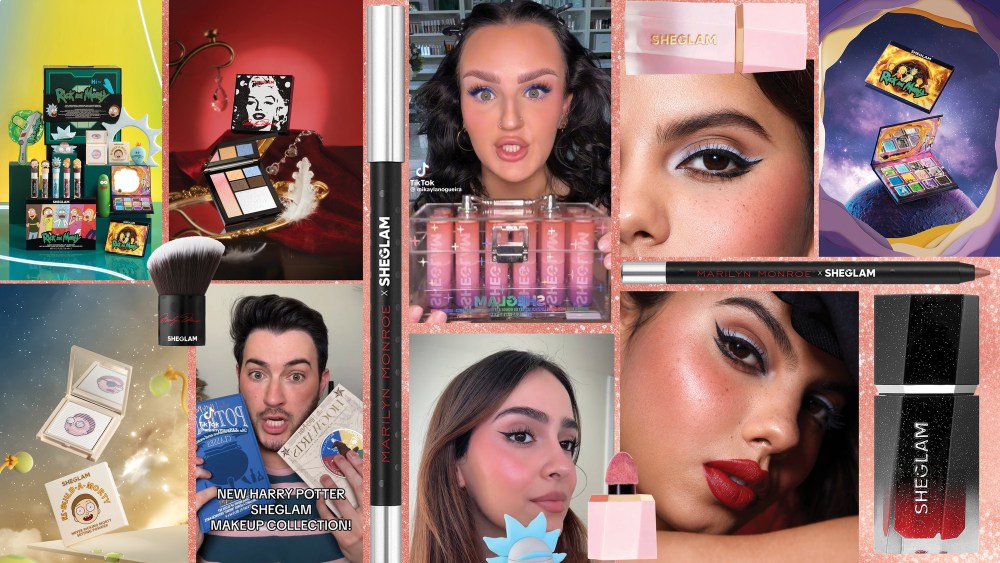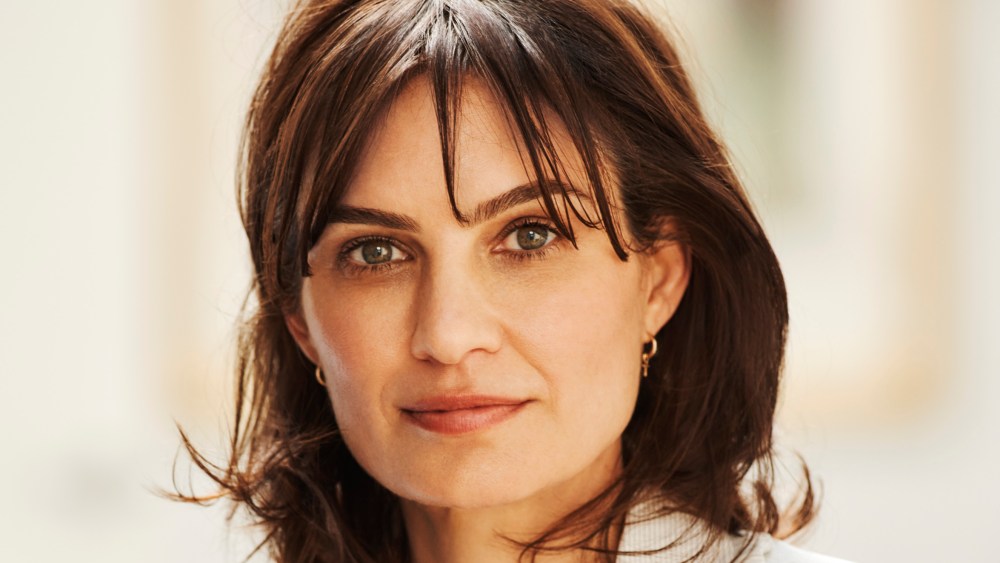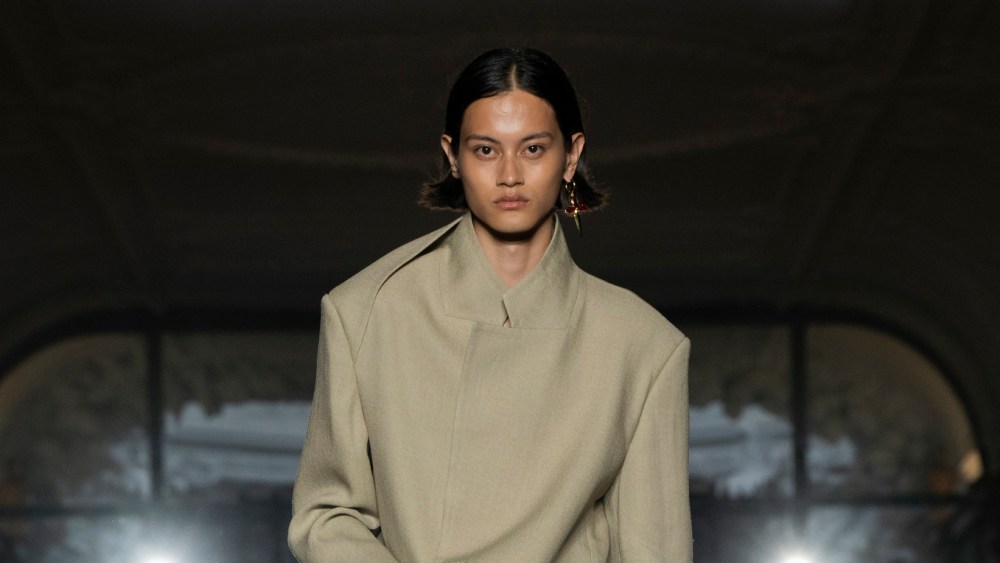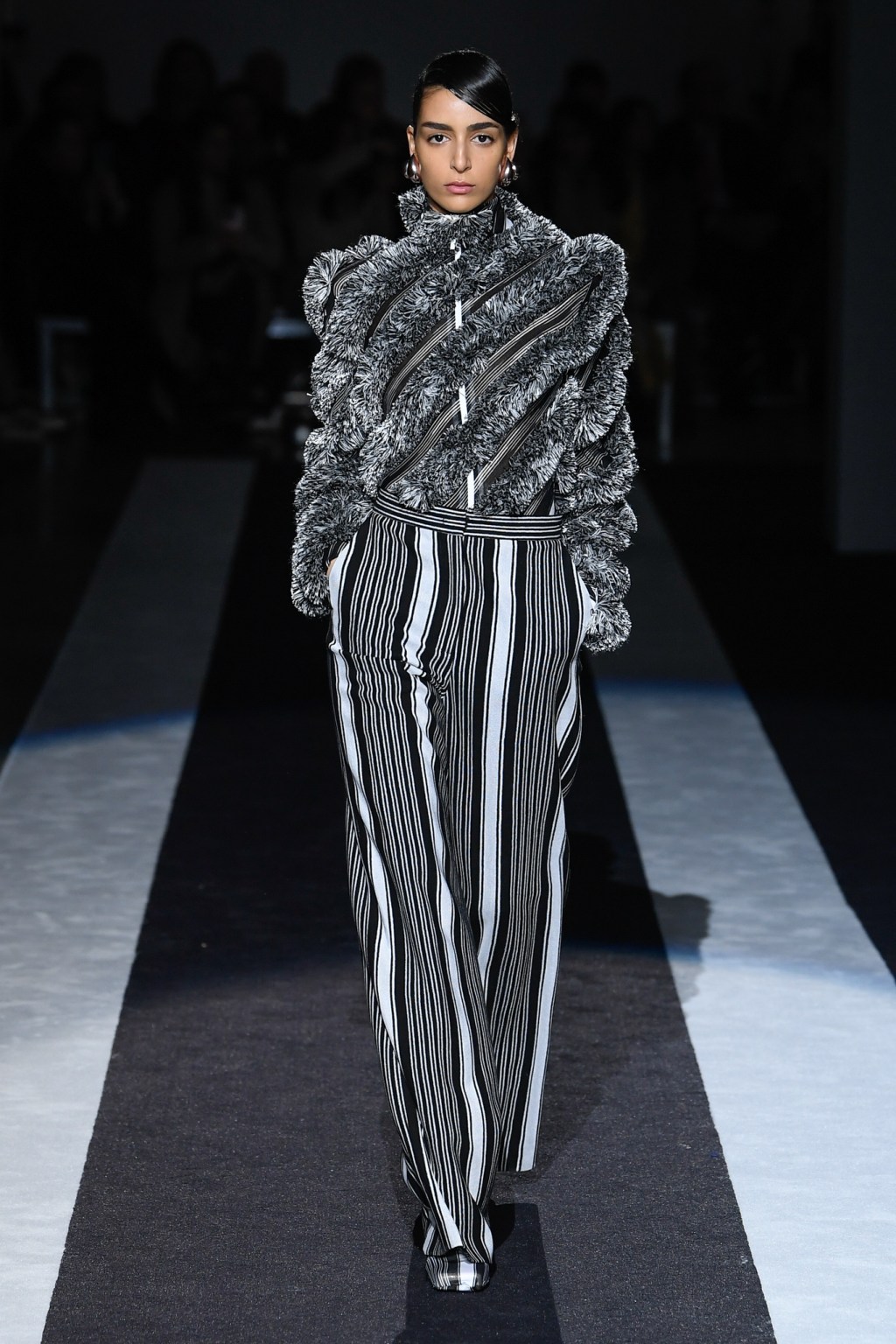Shein, the fast-fashion e-tail behemoth on the brink of a potential London IPO, dominates in apparel — and it’s coming for beauty, too.
The Chinese-founded retailer, which was valued at $66 billion during its most recent funding round last spring and, according to GlobalData, is estimated to have netted roughly $45 billion in revenue in 2023 — up from $22 billion in 2022 — has been more quietly building a similarly trend-driven color cosmetics arm, called SheGlam.
Best known for its steady stream of buzzy IP collaborations and its viral Color Bloom Liquid Blush, which retails for $5.99 and, according to Market Defense, ranks as the second-highest selling blush on Amazon (after E.l.f. Cosmetics’ Monochromatic Multi Stick, $5), SheGlam debuted in 2019 via a storefront on the Shein website.
Related Articles
A stand-alone site was launched in December 2020, and the brand added its third point of sale at Amazon two years later, where it did just over $2 million in sales in 2023 and is on track to reach more than $5 million this year, per Market Defense.
But Amazon looks to be the smallest channel by a long shot for the brand, which is available online in more than 150 countries so far and is quickly betting big on brick-and-mortar retail.

In terms of its overall business, one source posited that SheGlam could be doing between 0.5 percent to 1 percent of Shein’s total business, which would put the brand at between $225 million to $450 million in sales.
“Brick-and-mortar accounts for something like 90 percent of market share for many color cosmetics brands, so in order for us to drive more growth and achieve our goal of engaging with a larger community — that’s where we need to be,” said Tony Li, who joined SheGlam as vice president, general manager in March. He declined to comment on the sales figure. Previously, he held senior marketing roles at Youth to the People, JVN and E.l.f. Beauty.
After striking partnerships with Mawarid Trading Ltd. and Lifestyle at Centrepoint last year, SheGlam made its brick-and-mortar foray at the UAE’s Mall of the Emirates in November 2023, where it sells at department store Centrepoint alongside brands like NYX Professional Makeup and Maybelline New York. It added Dubai Mall and Dubai Hills shortly thereafter, and reportedly plans to grow its Middle East footprint to more than 200 doors by the end of this year.
“We became the number-one brand by [beauty] sales at more than 90 percent of the stores we opened in the Middle East, during our first week,” Li said.

According to Jitong Li, a beauty and fashion consultant at Euromonitor, the Middle East offers a compelling avenue for a brand like SheGlam because, “in comparison to Europe, the MEA mass color cosmetics market is less dominated by leading players, which makes it easier for new entrants.” Case in point: the top three mass color cosmetics companies accounted for 54 percent of the market in Western Europe, versus 31 percent in the Middle East and North Africa region.
Europe is a key market for Shein’s total business, though — particularly France and Spain, per Euromonitor — and because the region’s beauty market is growing faster than its apparel and footwear market (color cosmetics are anticipated to grow at a compound annual growth rate of 4.7 percent from 2023 to 2028, versus 2.5 percent for the latter over the same period), it’s similarly worth investment by SheGlam.
In the meantime, the makeup line is looking to Mexico, rolling out this month to all 1,400 doors of the department store chain, Liverpool.
The brand’s path to retail in the U.S., which Li said is “one of our key markets and…also the market we’re putting a lot of investment in this year to grow even further,” is less clear, however.
“It’s going to be a harder hill to climb,” said Manola Soler, a senior director in the consumer and retail group of Alvarez & Marsal, of SheGlam’s prospects of breaking into U.S. retail.
By and large, SheGlam has evaded the level of scrutiny surrounding unethical labor and manufacturing processes that have plagued its 2008-founded parent company since Shein went mainstream during the late 2010s. These concerns, and an overall lack of disclosure regarding the company’s supply chain, have been one of the factors encumbering Shein’s increasingly winding road to an IPO.
“Ideally, SheGlam would want to be next to an E.l.f. in a retail scenario, but due to the gray area around Shein, a lot of the mass retailers where that brand would sit — Target, Walmart, Ulta Beauty — have been moving away from that. They might not want to be caught up in that,” said Jessica Ramírez, senior research analyst at Jane Hali & Associates.

SheGlam has made distinct efforts to maintain a level of outward separation from its parent company, though. “Our operations are separate,” said Li, adding that “our production is fully automated, so it doesn’t involve any labor — which also allows us to save on that cost.”
Although consumers can buy SheGlam products from the Shein website, SheGlam’s stand-alone website and its social media pages include no mention of Shein. Rather, the bio of SheGlam’s TikTok page (which counts 7.4 million followers, second only in beauty to Huda Beauty’s 9.6 million), reads only “Leaping Bunny Approved, #SheGlam #SheGlamCrueltyFree.”
“That [separation] is probably deliberate and beneficial, frankly, to SheGlam,” said Soler, adding that, “consumer perception is difficult to change, so it’s hard to balance that very fast-fashion, rock-bottom pricing with, ‘OK, how much do I trust that this is going to be good for my skin?’ Certifications, like the vegan certification, could certainly be a route.”
Data from Statista indicates that SheGlam was the number-seven brand in 2023 by unique influencer mentions on TikTok, garnering mentions by 9,800 influencers. Target topped the ranking at 21,000 influencers, followed by Amazon at 18,800.
At 15,600 unique influencers, Sephora was the only beauty company to beat out SheGlam by the metric.
“SheGlam is a beast on TikTok — that has huge power, especially with the younger consumer,” Ramírez said.
Data from CreatorIQ shows most of SheGlam’s mentions come from tutorials and “product roundup and testing videos.” Director of research and insights Alex Rawitz noted that the brand is doing particularly well when it comes to cultivating long-term creator relationships, with 82 percent of the $42.5 million of the brand’s earned media value between January to April of this year coming from retained creators.
According to spate, SheGlam nets 22.9 million average weekly TikTok views — well above the average in beauty.
“Our goal is to be a global, inclusive brand,” said Li, who is based in Los Angeles where SheGlam operates one of three offices — the others being in China and Singapore. SheGlam has roughly 150 employees globally, said Li, more than 50 percent of whom are “focused on product and R&D,” while the brand’s Gen Z and women employee compositions both net out around 80 percent, respectively.
Most of the brand’s leadership team is female, including its founder and chief executive officer, Sylvia Fu, who Li said began as an assistant to Shein founder and CEO, Chris Xu, and ideated SheGlam shortly after leaving the company for a brief stint in venture capital.
Though Li did not comment on immediate plans to expand into skin care or adjacent categories to makeup, he said, “Our ultimate goal is to become a beauty universe for everyone who is looking for affordable products.”
According to Euromonitor, there are about 1,000 products presently available on sheglam.com. The brand adds between three to five core product offerings each year, and two to five new stock keeping units per month, including shade expansions, Li said. Collaborations, which drive much of SheGlam’s buzz and have recently included “Rick and Morty”-, Marilyn Monroe- and Harry Potter-inspired collections, similarly drop three to five times a year and are usually a year in the making, Li said.
Because lead times in beauty are much longer than fashion, some think this collaboration-focused strategy enables SheGlam to stay trend-driven and maintain a steady stream of product newness.
“Shein is taking what it’s good at and bringing it to the beauty sector,” said Renee Hartmann, managing director, councils for Coresight Research, noting that this strategy is part of what allows SheGlam to compete with the “NYX’s and Revolution Beauty’s” of the world, versus being lumped in with the beauty lines of Shein’s fast-fashion counterparts, such as H&M and Zara. “SheGlam is not just this add-on to [Shein’s fashion business] — it’s being considered as a real beauty contender.”
For Soler, SheGlam’s collaboration-heavy strategy is reminiscent of that which fueled the rise of ColourPop, which similarly plays in TV, movie and sport-inspired collections.
“It’s a clever way to capitalize on culture,” she said. “The nice thing is these [collaborations] can be a pretty quick turnaround, especially if you aren’t really changing formulation and are kind of changing the packaging — that kind of thing can take as little as eight to 12 weeks.”
While it remains to be seen what exactly a potential Shein IPO could mean for SheGlam, if one was to come to fruition it would “obviously provide a lot of capital for Shein to expand — and it seems like [SheGlam] has quite aggressive expansion plans,” Hartmann said.



